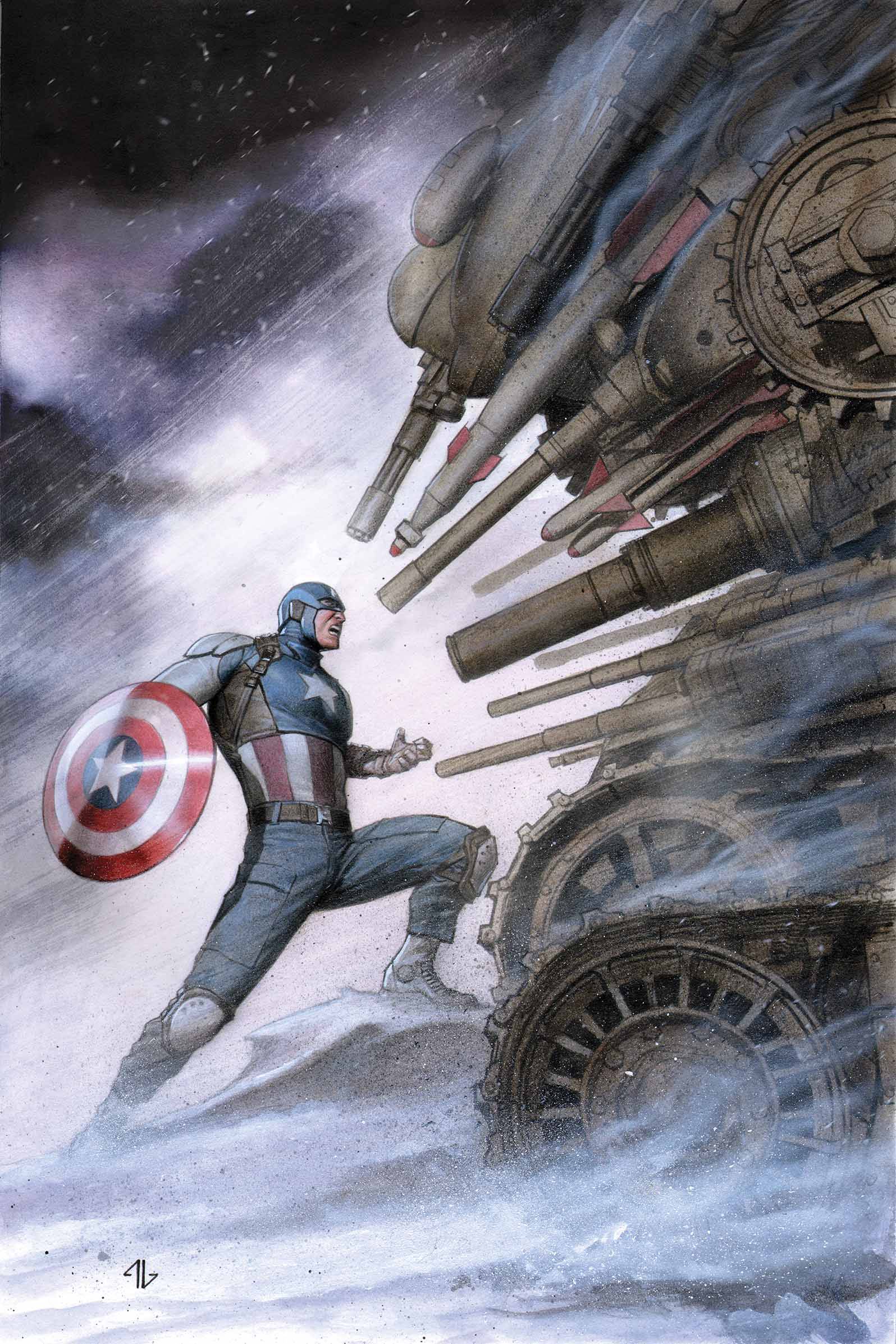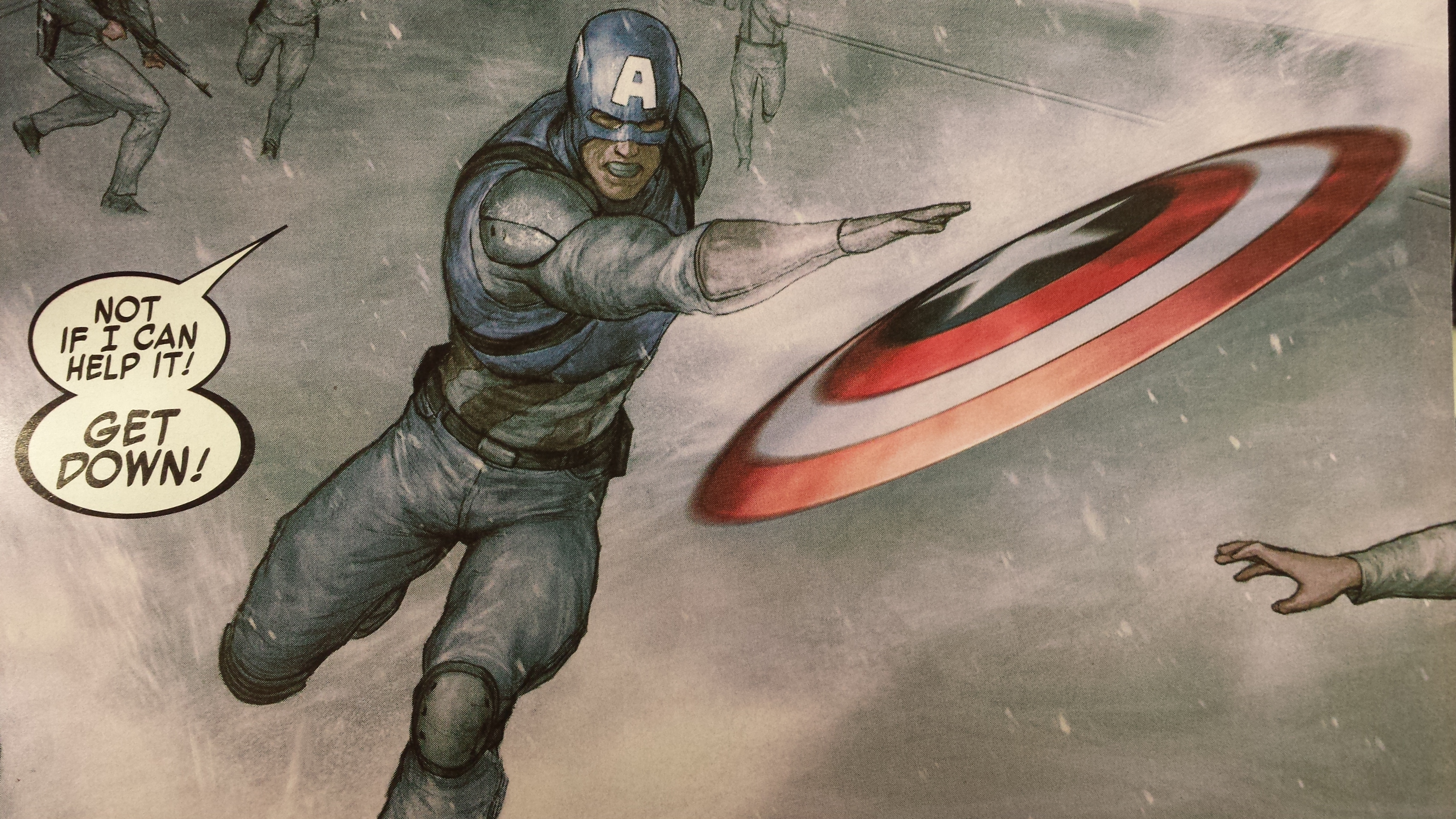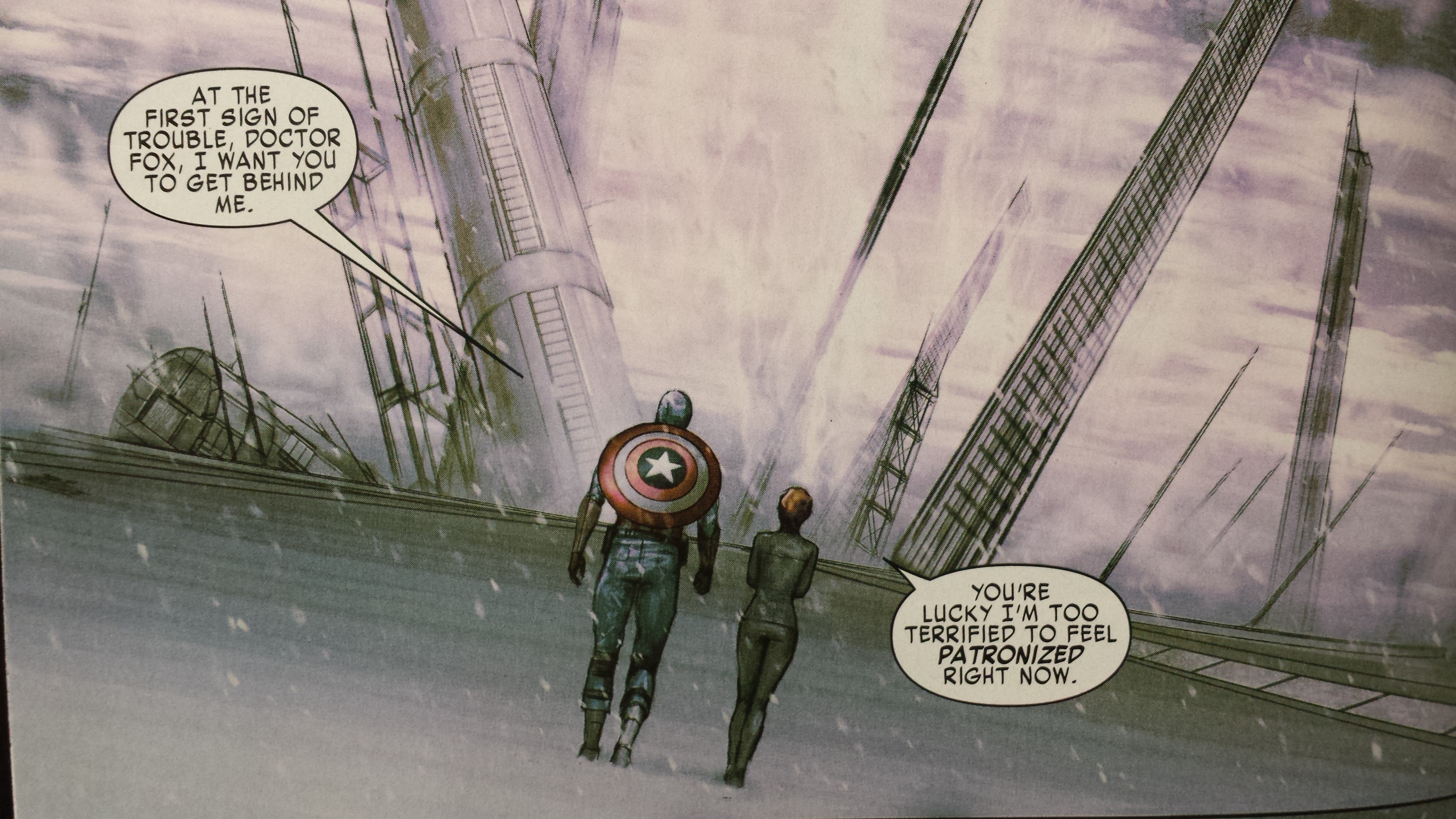I know the whole reason I established for this article was “Comic X vs. Invincible” but really what am I supposed to do if a company launches identical serials, except one really blows. I remember having issues with Rick Remender’s “Captain America” from day one.
“Wait a minute,” I said. “Why is Captain America in space? Just a moment ago he was in a subway station; did the Transit Authority add a few stops since I visited? And why is Captain America both in space and leading the Avengers?”
That’s why I was relieved when Andy Diggle launched “Captain America: Living Legend”, his own series that starts off with Captain America… in space. Actually, first it starts with him in World War II, the natural habitat for a wild Captain America. Things started quite nicely: the situation was dicey, their objective was escaping, and Steve hadn’t heroically charged at anything yet. The next panel fixed all that and the squadron charged down the hill and Captain America used his shield to destroy… a tank… as in he threw it so hard he separated the turret from the body…
Okay, so the series had a few bumps that it had to make up for. But on a whole, everything it has done so far has felt like an appropriate Captain America story. They’re in Russia, there’s danger and intrigue waiting around every turn, and there’s Cold War tension. The threat here, though mysterious, is clearly spreading so it’s up to Captain America to put a stop to this danger by punching it really hard in the face—or throwing his shield at everything and making it explode. Honestly, Andy Diggle gets weirdly excited about Cap throwing his spangly shield at things, so much so that it has become the only thing that can defeat this mysterious enemy.
Okay, so on a whole the series is not perfect, but the adventure seems so much more Captain America-esque. When Steve got trapped in space, it seemed they were forcing him to have this adventure. Every once in a while he would look back at the writer in despair.
“You sure you want me fighting the Bizarro versions of the Avengers? I feel like that’s a weird thing to have in space?”
“No you must fight these pseudo-Avengers!”
“All right… but why am I spending ten years here? I feel like that’ll muck up continuity just a bit.”
“No, it’ll be fine. Tony Stark’s in space too and he is handling his Earth conflicts adequately.”
“Well that’s another thing. Wouldn’t someone like Tony or Reed be more suited to this kind of thing? They’re both in space anyway, shouldn’t be too much trouble for them.”
“Absolutely not! It one hundred percent, has to be you! But we’ll send your girlfriend to keep you company.”
“Oh that’s nic—”
“And then we shall kill her!”
Why even send her Marvel? Seems to be a lot of effort for something that could just have easily happened on Earth. Honestly, she was a SHIELD agent—those guys die ten at a time. And really that was the problem with “Captain America”. Everything it did was a lot of effort to achieve something that was just as feasible on Earth. That’s why “Captain America: Living Legend” appears to be operating more from its wheelhouse. Sure, Steve is fighting aliens once more but their weakness seems to be shields covered in red, white, and blue so it really isn’t a stretch of the imagination to say that this is Steve’s specialty.
This issue had some flipping back and forth between the past and the present and it works well for the impending doom that Andy Diggle is trying to instill. We see that this enemy has been building for half a century, becoming more and more uncontrollable. Also? Doesn’t see a lot of value in human life. So as we watch a battalion of Russian soldiers march towards this threat, in our heads we’re seeing this suicide run. We know it but the issue still instills a frenzy and anxiety when the men start falling dead and becoming tools for the enemy. These are the kind of things that work well in the parameters of a Captain America story.
The key to a compelling story that doesn’t lose the reader is a setting and obstacle that the protagonist has the tools to overcome or can learn the tricks to overcome. “Invincible” does this well because Mark makes it very clear that he doesn’t know everything, but he is learning the different ways he can address problems. Robert Kirkman doesn’t screw with this by making Mark sword fight a Viking because Mark could simply cleave the man in half. Never has Mark had to invent a machine that kills the cancer monsters, that’s not something that his character is suited for. The Cap in “Captain America: Living Legend” excels because the problem is something he must overcome but his skills are predisposed to handling this situation. The Cap from “Captain America” never truly felt like Steve Rogers. In fact, if it had been any other character in that situation it would have been a good story.




